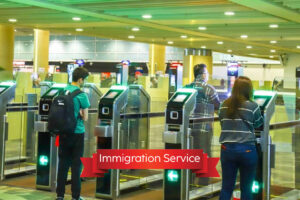In a strategic move to streamline the nation’s aviation sector, the Ministry of Transportation (Kemenhub) has reduced the number of international airports in Indonesia from 34 to just 17. This significant change is outlined in Ministerial Decree Number 31/2024 on the Designation of International Airports, issued on April 2, 2024. So, which airports have retained their international status, and what motivated this decision?
Indonesia, renowned for its breathtaking natural beauty and rich cultural diversity, has become an increasingly popular destination for international tourists. The nation’s charm lies in its stunning landscapes, warm hospitality, and diverse culinary offerings.
To facilitate tourist access across the archipelago, Indonesia boasts a network of airports scattered across various islands. These airports serve as critical air gateways, driving economic growth and symbolizing national progress.
However, the aviation sector faces its own set of challenges. A recent development that has sparked considerable attention is the Kemenhub’s decision to downgrade 17 international airports to domestic status. This move has raised several questions and concerns regarding its implications for connectivity, local economies, and tourism.
Rationale Behind the Reduction of International Airports in Indonesia
In early April 2024, Kemenhub announced its decision to reduce the number of international airports. The decree specifies that only 17 airports will retain their international status, a significant reduction from the previous 34.
Kemenhub spokesperson Ardita Irawati explained the primary goal of this decision: to strengthen the national aviation sector. She noted that some airports, which rarely handled international flights, were effectively channeling passengers to foreign hubs.
“The issuance of Ministerial Decree 31/2024 aims to protect international flights post-pandemic by establishing airports as international hubs within our own country,” Ardita stated in a press release on Friday, April 26, 2024.
“Most of the current international airports only serve flights to a few specific countries and not long-haul routes, which means that international hubs are being enjoyed by other countries,” she added.
According to data from the Directorate General of Civil Aviation at Kemenhub, only a handful of the 34 international airports opened between 2015 and 2021 regularly handled scheduled international flights. These airports include Soekarno-Hatta (Jakarta), I Gusti Ngurah Rai (Bali), Juanda (Surabaya), Sultan Hasanuddin (Makassar), and Kualanamu (Medan).
Strategic Considerations and Economic Impact
The government’s decision to downgrade these airports is part of a broader strategy to revitalize the national aviation sector, which was severely impacted by the Covid-19 pandemic. Ardita emphasized that the move aims to establish a more efficient and effective air connectivity network within Indonesia.
“Most of the international airports currently only serve short-distance flights to one or two countries, resulting in inefficient and underutilized facilities,” she said.
Data from Kemenhub highlights that only a few international airports regularly serve scheduled flights to and from multiple countries. From the 35 international airports established between 2015 and 2021, only five airports consistently manage international arrivals and departures from several nations: Soekarno-Hatta (Banten), I Gusti Ngurah Rai (Bali), Juanda (East Java), Sultan Hasanuddin (South Sulawesi), and Kualanamu (North Sumatra).
Implications for Local Airports and Connectivity
Ardita further explained that many international airports only serve short-distance routes to one or two countries, leading to inefficient operations. This restructuring is expected to optimize the use of airport facilities and improve overall efficiency.
“This situation leads to inefficiencies, with many international terminal facilities meeting regulatory standards but being underutilized or idle for extended periods, such as x-ray facilities and waiting areas in terminals,” said PT Angkasa Pura Indonesia (InJourney Airports) CEO Faik Fahmi, quoted from kompas.id.
“Therefore, restructuring is necessary,” he added.
The restructuring aligns with InJourney Airports’ transformation program, which aims to create a more efficient and effective air connectivity network to promote tourism and economic growth through better aviation ecosystem management.
Updated List of International Airports in Indonesia
Here is the updated list of international airports:
| Airport | Airport Code | Location |
| Yogyakarta International Airport (YIA) | YIA | Kulonprogo, Special Region of Yogyakarta |
| Sultan Hasanuddin | UPG | Maros, South Sulawesi |
| Juanda | SUB | Sidoarjo, East Java |
| Sultan Syarif Kasim II | PKU | Pekanbaru, Riau |
| Minangkabau | PDG | Padang Pariaman, West Sumatra |
| Sam Ratulangi | MDC | Manado, North Sulawesi |
| Zainuddin Abdul Majid | LOP | Central Lombok, West Nusa Tenggara |
| Komodo | LBJ | Labuan Bajo, East Nusa Tenggara |
| Kualanamu | KNO | Deli Serdang, North Sumatra |
| West Java International Airport (BIJB) Kertajati | KJT | Kertajati, Majalengka Regency, West Java |
| Halim Perdanakusuma | HLP | East Jakarta |
| I Gusti Ngurah Rai | DPS | Badung, Bali |
| Sentani | DJJ | Sentani, Jayapura, Papua |
| Soekarno-Hatta | CGK | Tangerang, Banten |
| Sultan Iskandar Muda | BTJ | Aceh Besar, Aceh |
| Hang Nadim | BTH | Batam, Riau Islands |
| Sultan Aji Muhammad Sulaiman | BPN | Balikpapan, East Kalimantan |
Despite the challenges, the future of Indonesia’s aviation industry remains promising. With its extraordinary tourism potential and stable economic growth, Indonesia has a great opportunity to become an international aviation hub in Southeast Asia.
The government plans to continue investing in aviation infrastructure, improving human resources, and creating conducive regulations for the aviation industry. These steps are expected to help Indonesia become a more advanced and prosperous country, with increasingly connected skies that benefit all Indonesians.
This restructuring, while challenging, is a step towards a more efficient and robust aviation sector, ultimately enhancing Indonesia’s connectivity and economic prospects.





 20% off today. Whatsapp us!
20% off today. Whatsapp us!